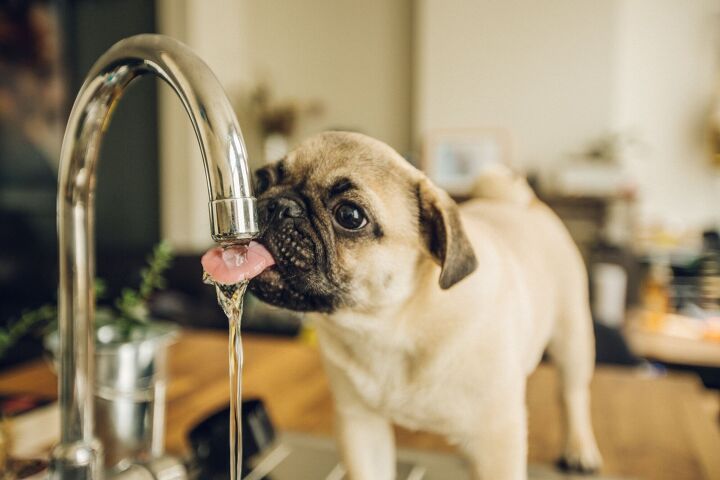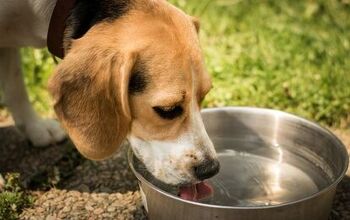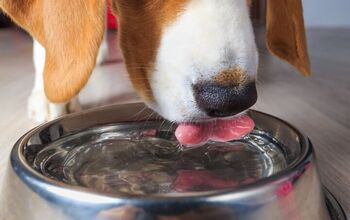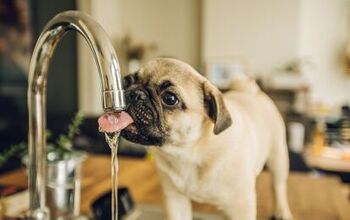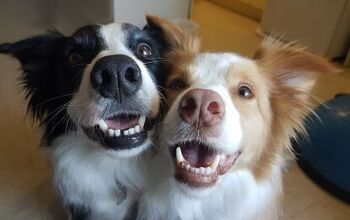How Much Water Should My Dog Drink Daily?

Ensuring your canine companion stays adequately hydrated is an important aspect of pet parenting – but the trick is knowing what staying hydrated actually means for our four-legged besties. The question of how much water dogs should drink daily depends on various factors, such as their size, activity level, and other conditions, like the weather.
How to Calculate the Hydration Needs of Your Pet
The amount of water a dog should consume daily is not a one-size-fits-all measure. As a general guideline, dogs typically require about 1 ounce of water per pound of body weight per day. This means that a 15-pound dog would need around 15 ounces of water daily, while a large breed dog that, let’s say, weighs 90 pounds might require as much as 90 ounces.
Of course, this is just a rule of thumb and there are many factors that could further influence this – here’s how.
- Activity Level
A dog's activity level directly impacts their hydration needs. Active dogs which engage in frequent exercise and energetic play, tend to lose more fluids through panting and sweating. Consequently, they require more water to replenish these losses. Naturally, the opposite is true for less active dogs as couch potatoes have lower fluid requirements.
- Environmental Conditions
Weather conditions also play a vital role in determining how much water your dog should drink on a daily level. Hot and humid weather can cause dogs to pant excessively, leading to fluid loss. Not to mention that hot summer days make everyone a bit more thirsty than usual – your dog included. In such conditions, it's essential to provide extra water to prevent dehydration. Cold weather might reduce your dog's water intake, but that doesn’t mean you should neglect their need for water. At home, make sure that you always keep their water bowl topped up with fresh water, and when you’re on the go, always keep water on you to offer during walks. This type of water bottle for dogs with a built-in bowl is super practical – this particular design is my favorite because of the fact that it’s made from stainless steel and insulated, which guarantees that the water will stay cool for several hours, making sure that much-needed drink on the hike is also refreshing and not just hydrating.
- Diet Composition
The type of food your dog consumes can impact their hydration needs. Dry kibble diets contain less moisture, so dogs on such diets may require more water to compensate. Wet or canned food diets, containing higher moisture content, contribute to overall hydration but still necessitate additional water intake as they can’t fully meet your pet’s hydration needs. In either case, offering fresh water as well as a balanced diet is essential for your pet’s overall health and well-being.
Recognizing Signs of Dehydration
Sometimes, despite your best efforts, your pet won’t be too keen on drinking water, which can in turn make you question if your dog is getting enough water on a daily basis. A nifty “trick” to get your pampered pooch to drink more water is to get a pet fountain to motivate them – a clever design such as this one will entice them to drink more, filter and circulate the water so it’s always fresh and palatable, and since it is made from ceramic, it won’t harbor bacteria and it will be much easier to clean than plastic.
If you’re still worried your pet isn’t getting enough water, watch out for the following symptoms:
- Dry Gums and Mouth
Dehydrated dogs often have dry, sticky gums and a tacky mouth. You can check by gently lifting their lips and observing the moisture level of their oral tissues.
- Lethargy and Reduced Activity
A dehydrated dog might appear lethargic, show decreased interest in activities, and display overall reduced energy levels.
- Loss of Elasticity in Skin
Gently pinch a fold of skin on your dog's neck or back. In well-hydrated dogs, the skin should quickly return to its original position. If the skin takes longer to snap back, it could indicate dehydration.
If you notice any of these symptoms, take your dog to the vet. They’ll get them on an IV to help hydrate them faster and more efficiently and propose further treatment if needed.

A proud mama to seven dogs and ten cats, Angela spends her days writing for her fellow pet parents and pampering her furballs, all of whom are rescues. When she's not gushing over her adorable cats or playing with her dogs, she can be found curled up with a good fantasy book.
More by Angela Vuckovic



